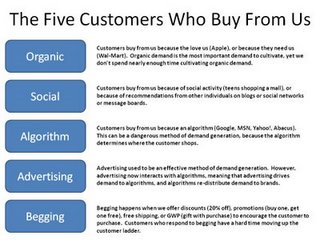 Five years ago the book Moneyball was going around the office of respond360, which is the CRM arm of BVK. The book fueled my love affair with data-driven marketing. In reviewing the book this morning, I realize how relevant its lessons have become in our economic downturn.
Five years ago the book Moneyball was going around the office of respond360, which is the CRM arm of BVK. The book fueled my love affair with data-driven marketing. In reviewing the book this morning, I realize how relevant its lessons have become in our economic downturn.
Wikipedia describes the account of the Oakland A’s unprecedented success on a shoestring budget this way:
Statistics such as stolen bases, runs batted in, and batting average, typically used to gauge players, are relics of a 19th-century view of the game and the statistics that were available at the time.
The book argues that the Oakland A’s front office took advantage of more empirical gauges of player performance to field a team that could compete successfully against richer competitors in Major League Baseball.
Rigorous statistical analysis had demonstrated that on base percentage and slugging percentage are better indicators of offensive success, and the A’s became convinced that these qualities were cheaper to obtain on the open market than more historically valued qualities such as speed and contact. These observations often flew in the face of conventional baseball wisdom and the beliefs of many baseball scouts and executives.
By re-evaluating the strategies that produce wins on the field, the 2002 Athletics, with approximately $41 million in salary, are competitive with larger market teams … who spend over $100 million in payroll. Because of the team’s smaller revenues, Oakland is forced to find players undervalued by the market, and their system for finding value in undervalued players has proven itself thus far.
I found the book inspiring then, and I find it even more exciting today. In spite of my general lack of enthusiasm for the sport of baseball, I found it the best business book of 2003.
Reading Digital Tea Leaves
The author argues that most teams still rely on the black art of talent scouting. Wizened, tobacco-spewing scouts watch a young athletes play and proclaim him either unfit or “slugger material.” Does this sound like the seat-of-the-pants metrics that marketing has traditionally used to evaluate markets, products and campaigns?
Back when I read it, I was thrilled to imagine new ways to read a different sort of tea leaves — namely, the ones found in market and customer databases. What I’ve learned since is that once you start looking at data in a new way, you can find breakthrough insights.
You really can.
Although I don’t think he’s a marketer, here’s what “Ryan,” in his GoodReads review of the book, wrote:
Awesome – story of how the Oakland A’s built a great baseball team on one of the league’s smallest budgets by using innovative statistical analysis to identify undervalued players. I think that’s pretty neat.
I couldn’t have put it better. Pretty neat indeed.

